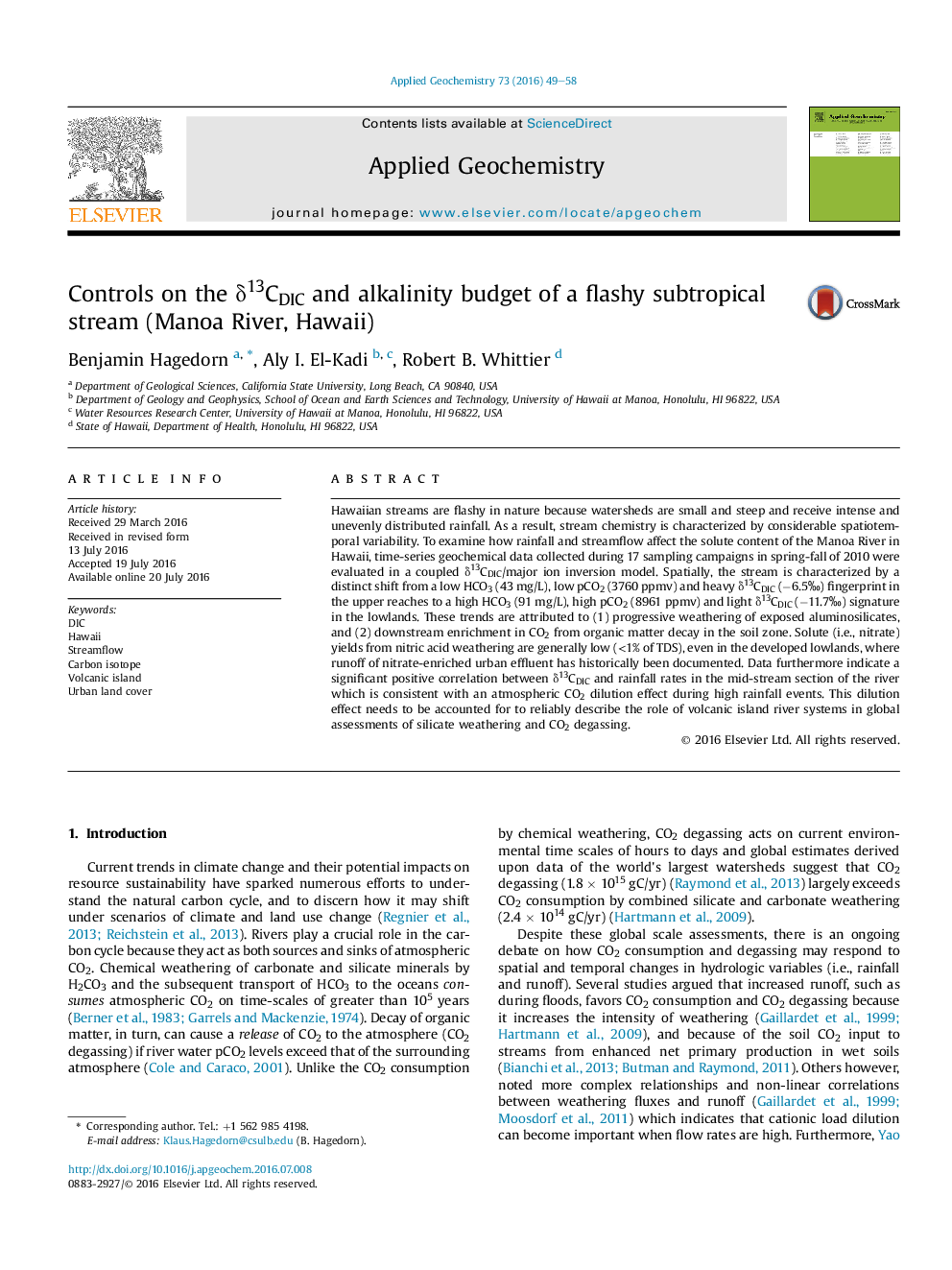| Article ID | Journal | Published Year | Pages | File Type |
|---|---|---|---|---|
| 4435537 | Applied Geochemistry | 2016 | 10 Pages |
•Carbonic acid weathering dominates over nitric acid weathering.•Silicate weathering dominates over secondary carbonate weathering.•Organic matter decay in the soil zone causes downstream pCO2 enrichment.•Rainfall events cause H2CO3 dilution in the upper stream segments.
Hawaiian streams are flashy in nature because watersheds are small and steep and receive intense and unevenly distributed rainfall. As a result, stream chemistry is characterized by considerable spatiotemporal variability. To examine how rainfall and streamflow affect the solute content of the Manoa River in Hawaii, time-series geochemical data collected during 17 sampling campaigns in spring-fall of 2010 were evaluated in a coupled δ13CDIC/major ion inversion model. Spatially, the stream is characterized by a distinct shift from a low HCO3 (43 mg/L), low pCO2 (3760 ppmv) and heavy δ13CDIC (−6.5‰) fingerprint in the upper reaches to a high HCO3 (91 mg/L), high pCO2 (8961 ppmv) and light δ13CDIC (−11.7‰) signature in the lowlands. These trends are attributed to (1) progressive weathering of exposed aluminosilicates, and (2) downstream enrichment in CO2 from organic matter decay in the soil zone. Solute (i.e., nitrate) yields from nitric acid weathering are generally low (<1% of TDS), even in the developed lowlands, where runoff of nitrate-enriched urban effluent has historically been documented. Data furthermore indicate a significant positive correlation between δ13CDIC and rainfall rates in the mid-stream section of the river which is consistent with an atmospheric CO2 dilution effect during high rainfall events. This dilution effect needs to be accounted for to reliably describe the role of volcanic island river systems in global assessments of silicate weathering and CO2 degassing.
